Sightseeing Spots
Search Results314
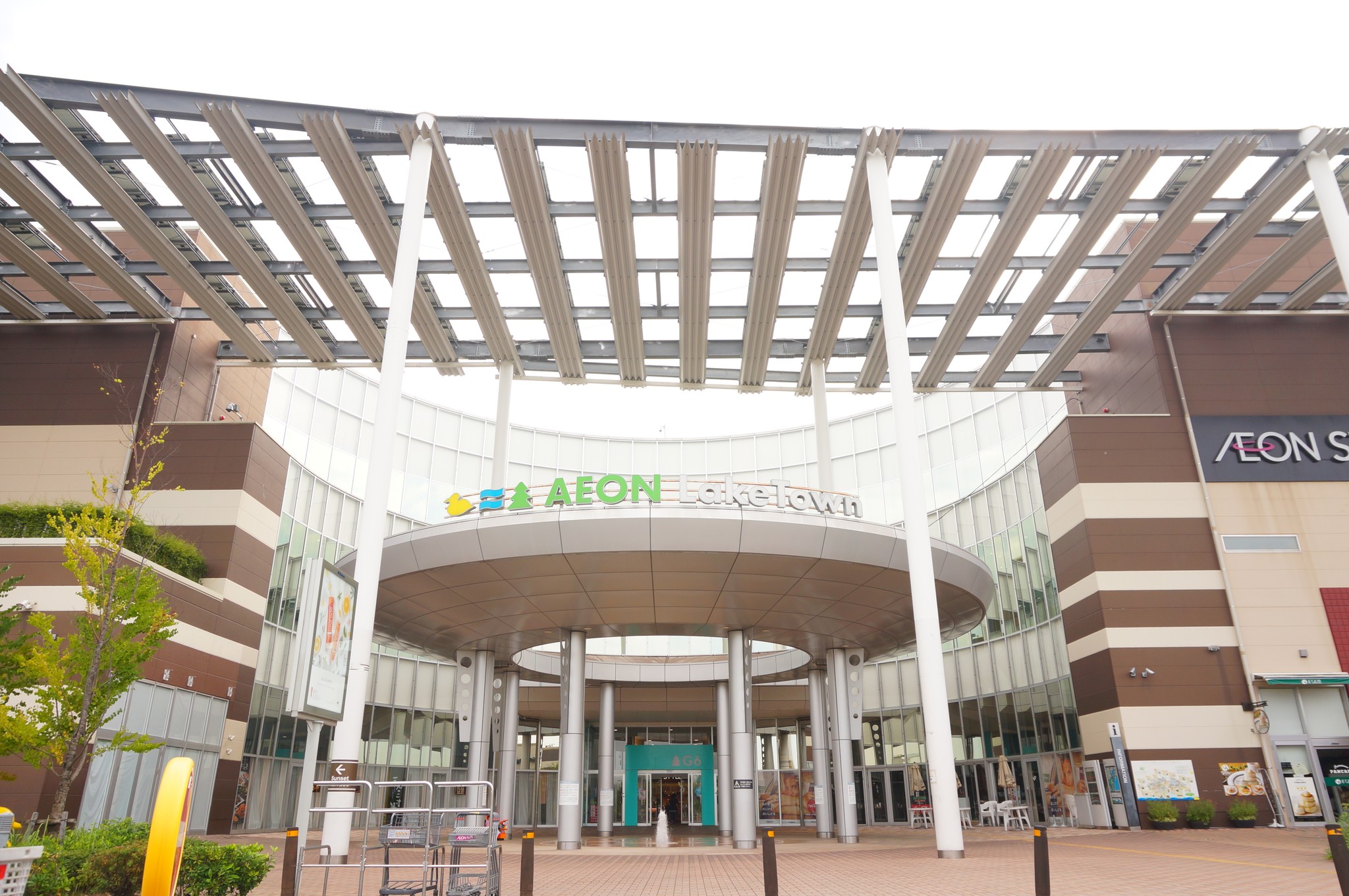
AEON Lake Town is one of the largest shopping malls in Japan, with over 700 specialty shops and Aeon Style grocery store located in three buildings: kaze, mori and outlet.
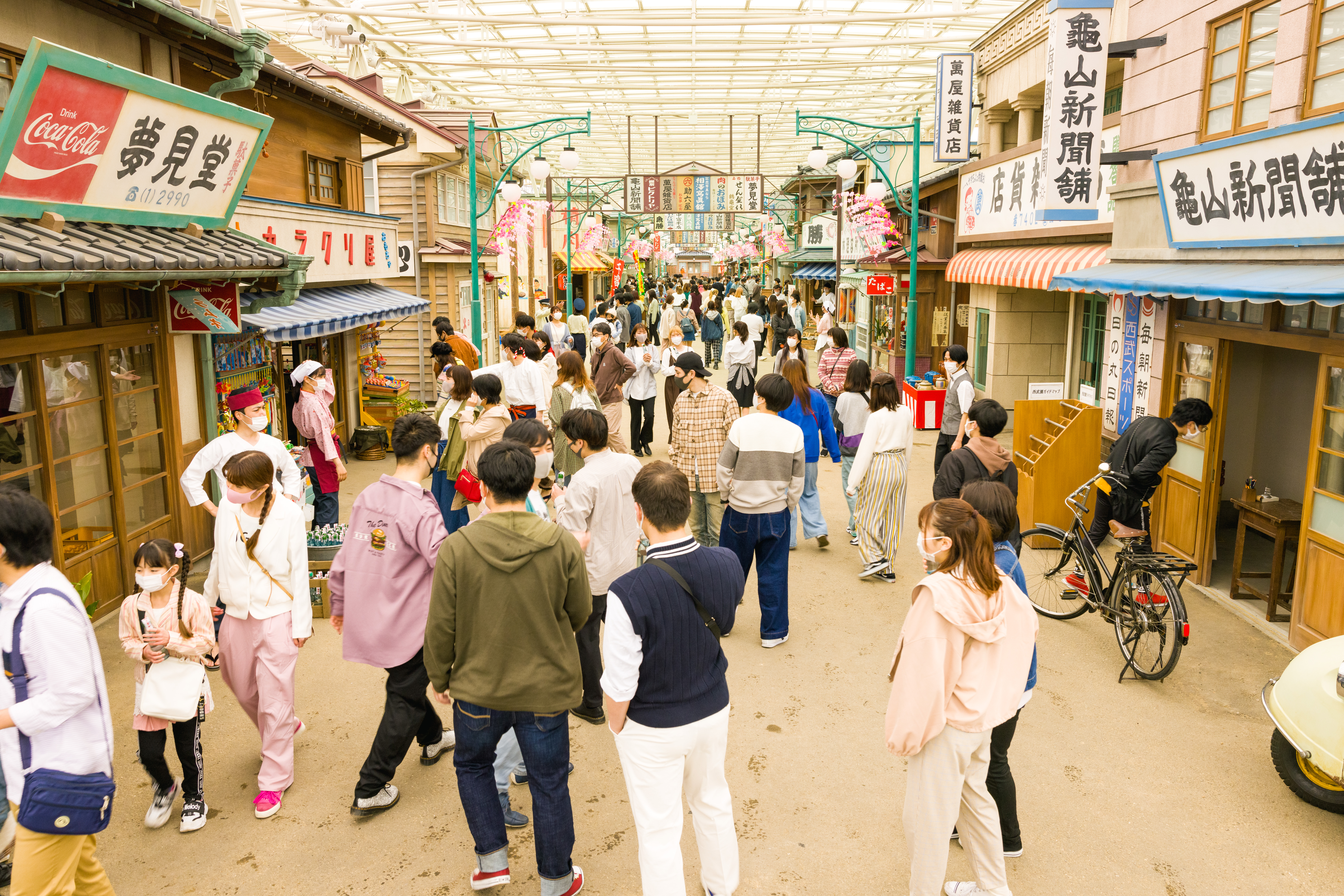
Newly reopened in 2021 with the concept: "A heart-warming world nestled in happiness." Find yourself in a world of wonder with high-quality replicas of retro townscapes, interactions with townspeople and spontaneous live performances, and delicious nostalgic foods. There are also new and exciting immersive light-up attractions for you to enjoy!
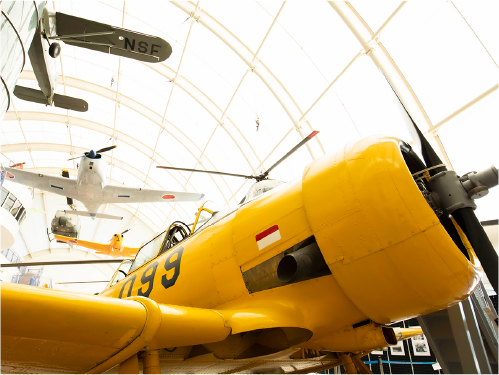
At this memorial museum, materials related to the history of aviation are displayed alongside actual airplanes. Visitors can learn about the principles of flight and aviation history from a variety of angles through flight simulators and helicopter piloting simulators! The many airplanes and helicopters displayed throughout the museum are a must-see. A special place to experience the wide-open skies and the history of flight in Tokorozawa. Aircraft craft workshops for families are also held regularly.
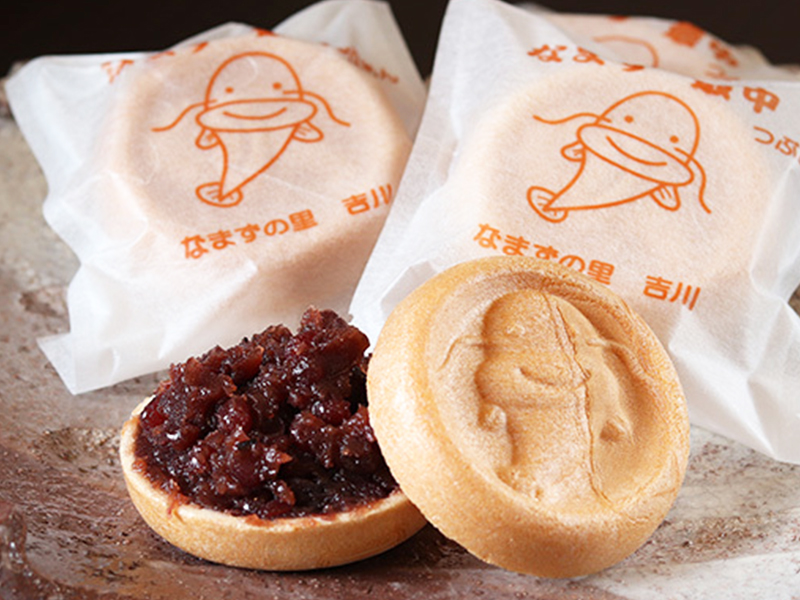
A well-established Japanese sweets shop in Yoshikawa City that has been in business for 60 years. It was relocated to behind Yoshikawa Shrine and reopened in 2019. The famous "Namazu Manju," made from homemade red bean paste cooked with a rare attention to detail, makes for a perfect souvenir. We also recommend the "Namazu Monaka" to compare the taste of smooth and coarse red bean paste, and the dango (rice flour dumplings) made fresh to order.
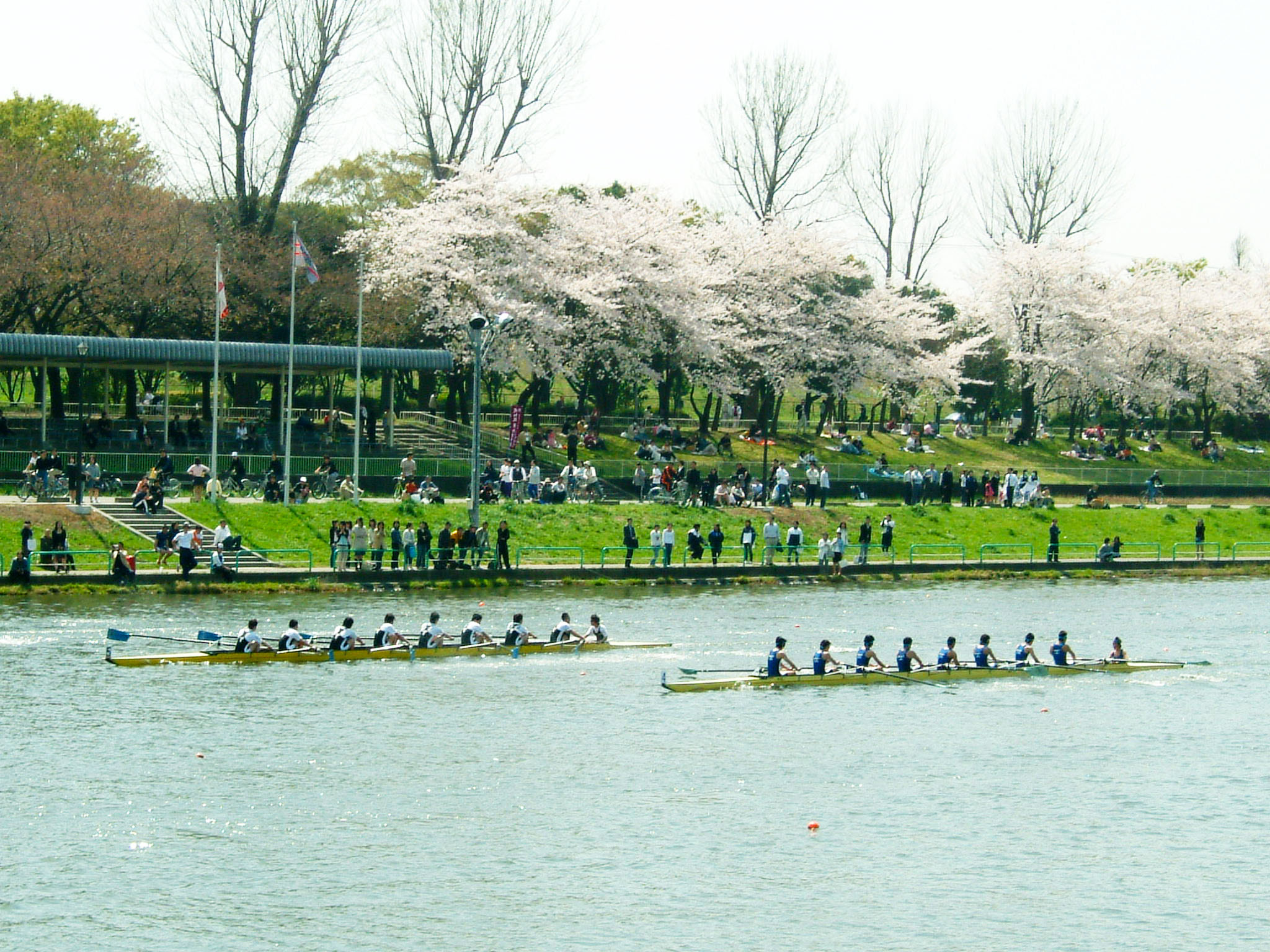
Toda Park was built between 1937 and 1940, centered around a rowing course which is the largest artificial still water course in Japan. Established as a city park after the 1964 Tokyo Olympics, it is used as a training area and competition venue for rowing, while also providing a relaxing environment filled with nature for the local citizens. The park is adjacent to the bank of the Arakawa River and also has an elevated plaza, flower beds, and lots of playground equipment, making it popular for not only its rowing course.
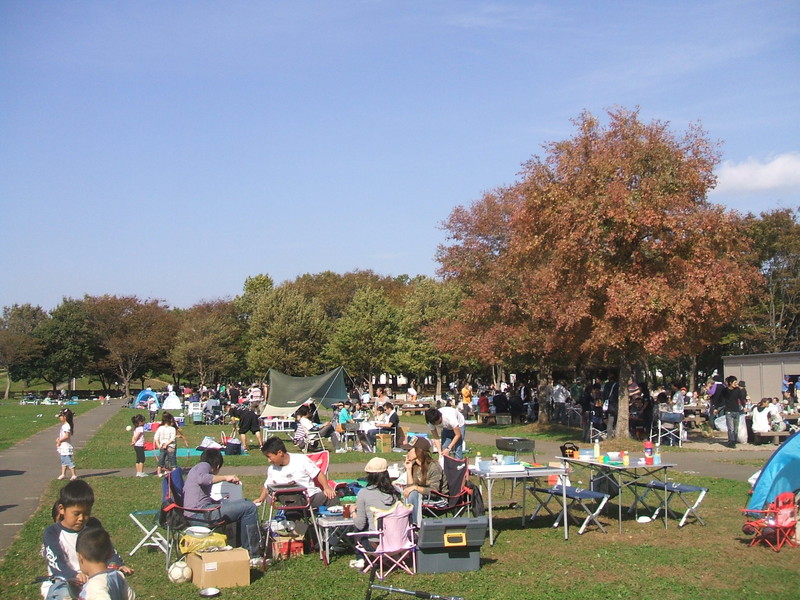
This park features an open lawn space and large wooden play equipment, and the area is crowded with families all year. Seasonal flowers grow throughout the park, and in addition to cherry blossoms in the spring, the moss phlox (April to May) and irises (early June) bloom in a heart-warming sight. There are also kitchen spaces for barbecue, and visitors can fish at the large pond, Koai Tamei (within the designated area).
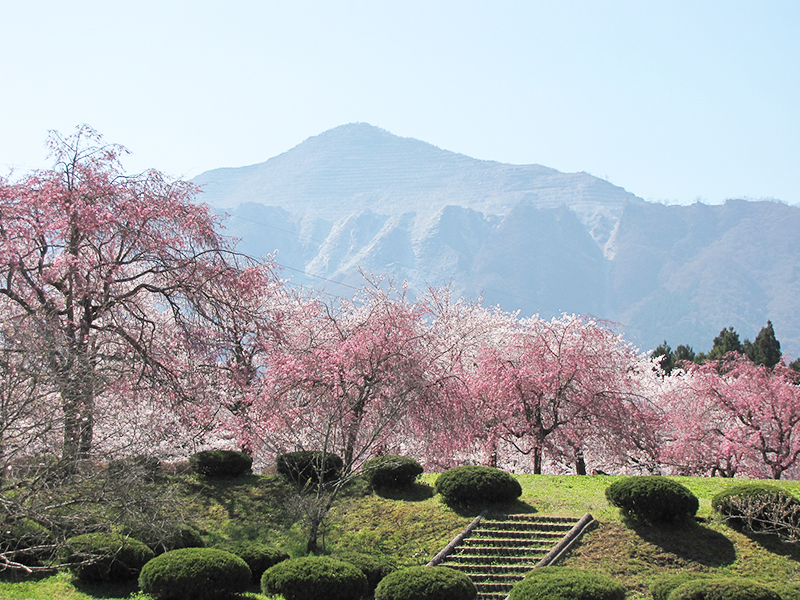
Surrounded by lush greenery and famous for its shibazakura (lawn cherry) and cherry blossoms, this park is located on a hill overlooking the city center and has been long-cherished as a place to relax by the local citizens. There is a hill overlooking the city and surrounding mountains, "Miharashi no Oka," an athletic park "Wanpaku Hiroba" for children to play at, and exhibition halls such as the Mt. Bukou Museum and Yamato Art Museum.
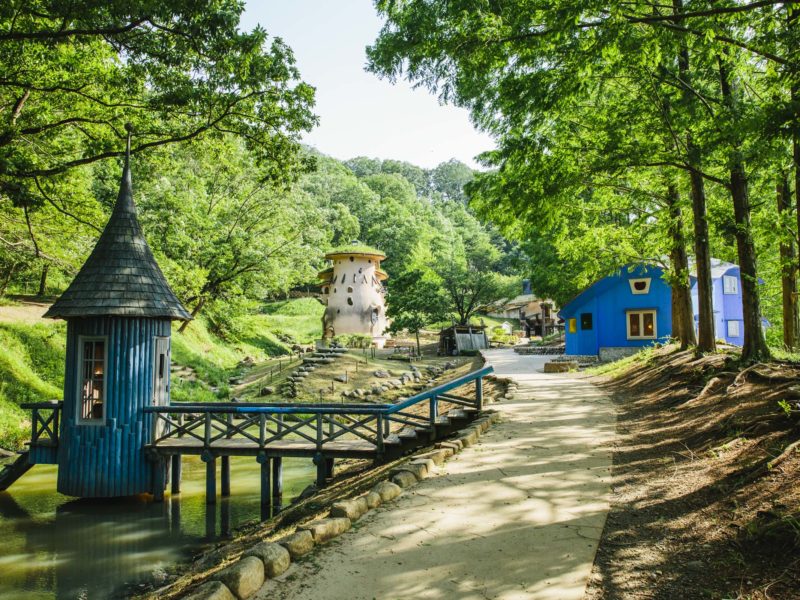
A park inspired by the world of Scandinavian fairy tales. Unique buildings that tickle your imagination stand on park grounds overflowing with greenery. Play freely in nature among the refreshing breeze and dappled shade in this relaxing space for everyone.
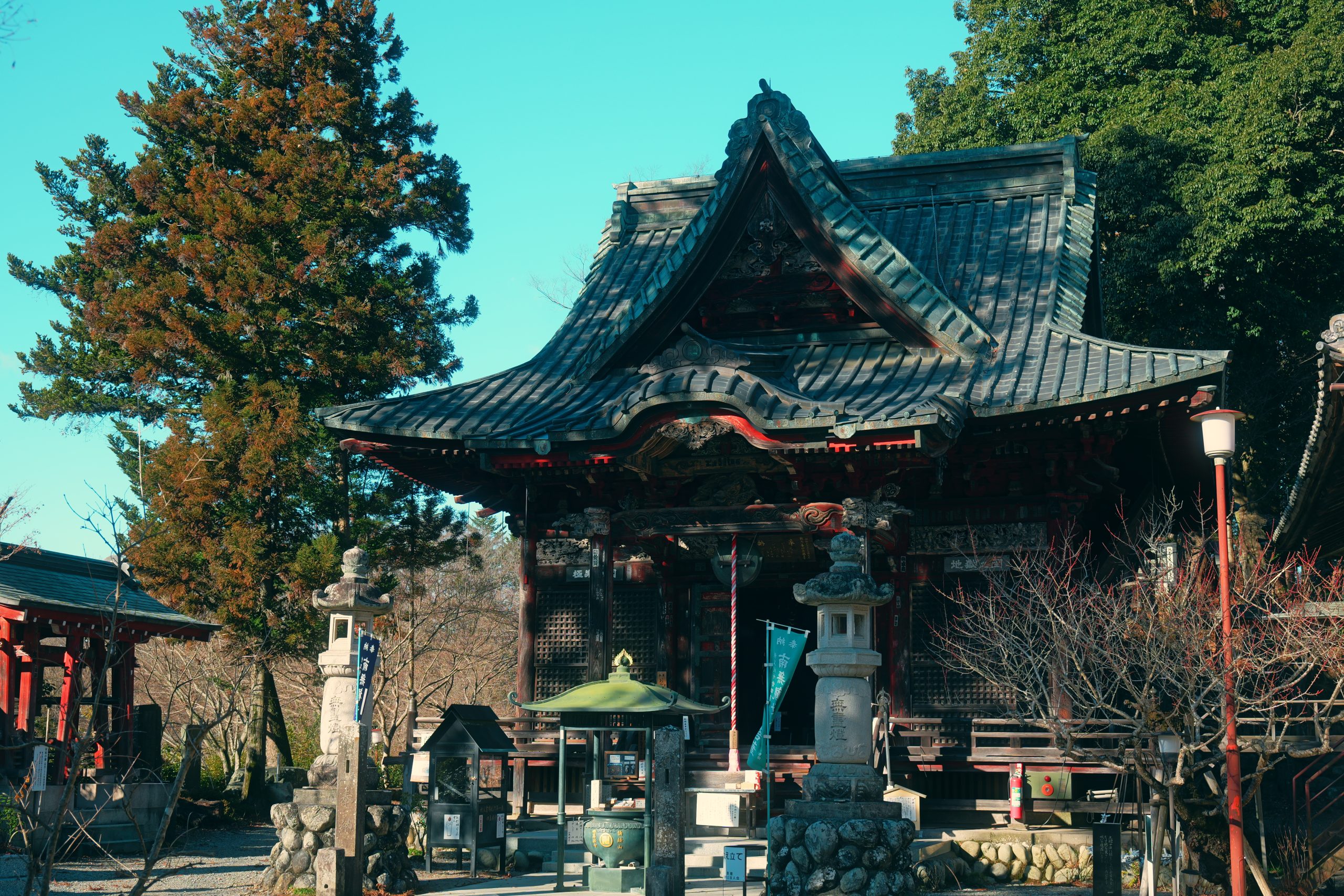
Shimabu-ji Temple is the No.1 temple of Chichibu Fudasho (34 sacred places of the Kannon) . The main hall (Kannon-do), built in 1697, has been designated as a tangible cultural property of Saitama Prefecture. The carvings on the front balustrade, 'Jigoku no zu' and 'Gokuraku no zu', are magnificent. The main hall enshrines the deity Otasuke Kannon, who is said to help people out of their troubles and suffering. The Great Ceremony held every year on 24 August in the Shishoku Shokudo to the right of the main hall is also famous. It is a very lively gathering of monks from Chichibu, regardless of denomination. This event is famous as one of the three major offerings in the Kanto region, along with the Gyokusoin no Daisegaki in Saitama City and the Dojo Shigaki in Eifukuji in Sugito-cho, Kitakatsushika-gun.
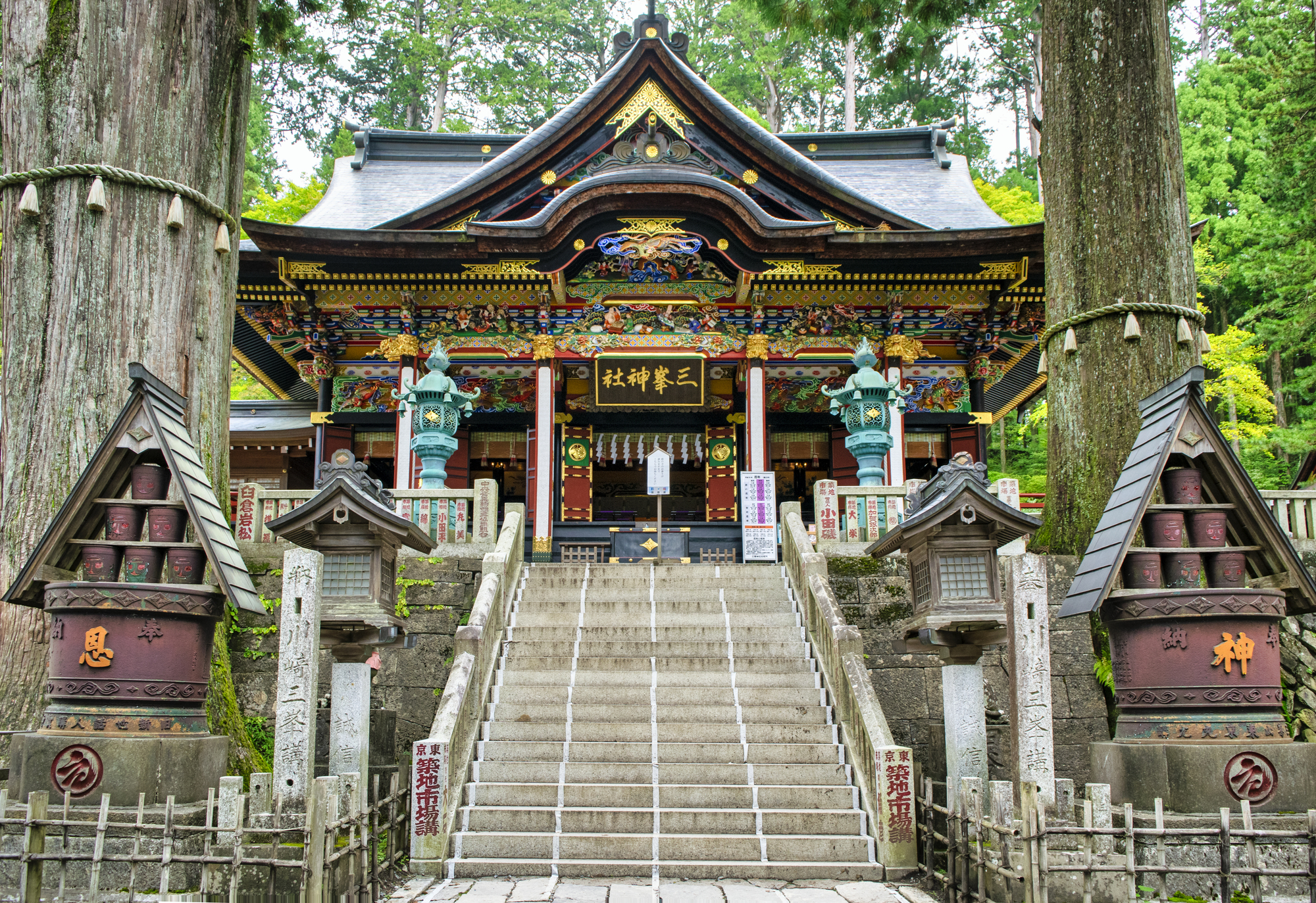
The history of the temple is said to date back about 2,000 years ago, to the reign of Emperor Keiko. During the Kamakura period (1185-1333), when faith in Mt. Mitumine spread, Hatakeyama Shigetada, Nitta Yoshioki, and others worshipped here. During the Tokugawa period (1603-1867), the Kishu shogunate and the Kishu family were revered, and gifts from the Kishu family in particular are still treasured by this shrine. When autumn arrives, the “Fifteen Nights and Moon Reading Festival” is held to herald the arrival of autumn in the mountains of Chichibu.
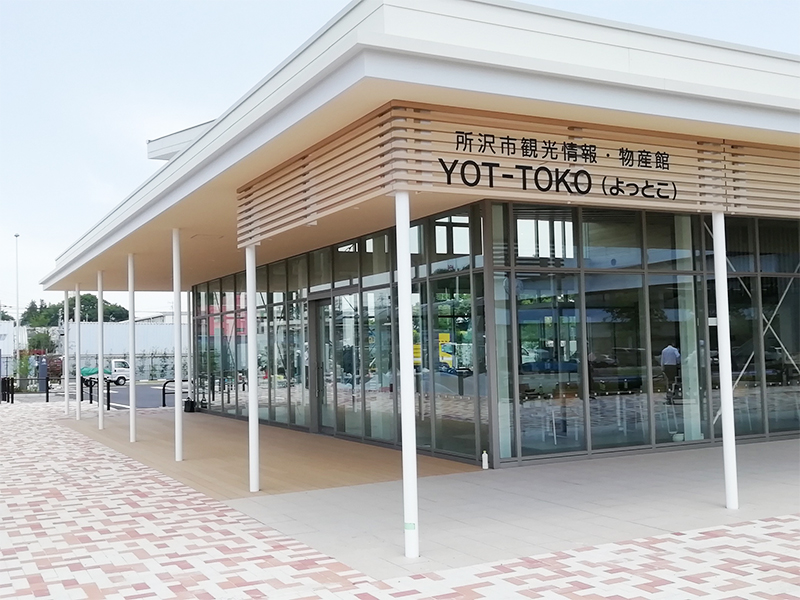
At YOT-TOKO you will discover the many delicious foods and great places to visit in Tokorozawa! In addition to providing tourist information and selling unique local foods and specialties, there are also displays of traditional noh masks, kumade rakes and hina dolls; a showcase of the many charms of Tokorozawa. Among these are the eye-catching packages of Sayama tea, the pride of local tea producers, and this shop is the only place where all brands are available in one place. The shop is connected to Tokorozawa Sakura Town via the Tokorozawa Sakura Town Bridge.
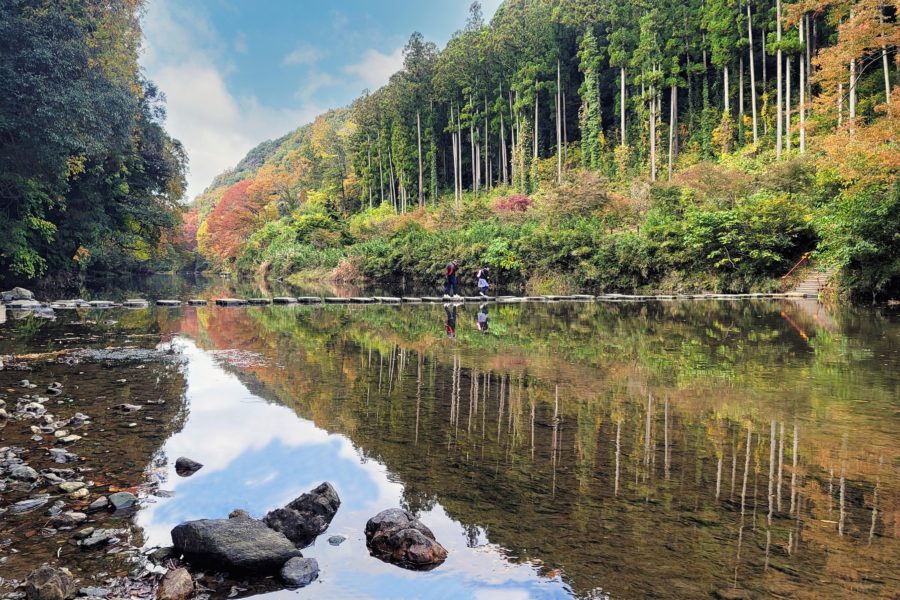
Ranzan Valley is one of Saitama Prefecture's famous scenic spots known for the Iwadatami rock terraces, the clear streams of the Tsukikawa River, and the heavily wooded natural environment. The Hosokawa area has a particularly unique peninsula-like topography, where a large river channel turns at a sharp 180 degree angle. The valley and surrounding Japanese red pine forests are a stunning sight! When Dr. Seiroku Honda, the first person in Japan to hold a Ph.D. of forestry, visited the area, he noted its great similarity to the landscape of Arashiyama in Kyoto, and referring to it as the "Arashiyama of Musashi Province," provided the origin of the name "Ranzan," another way to read "Arashiyama." In the summer, one can enjoy the fresh green and sounds of babbling brooks and chirping birds, in just an unbelievable one hour distance from the metropolis. In autumn you can also enjoy the reflection of the leaves on the surface of the water emphasized by the fiery red of the momiji maple trees. *Peak season for autumn leaves is mid-November to early December.
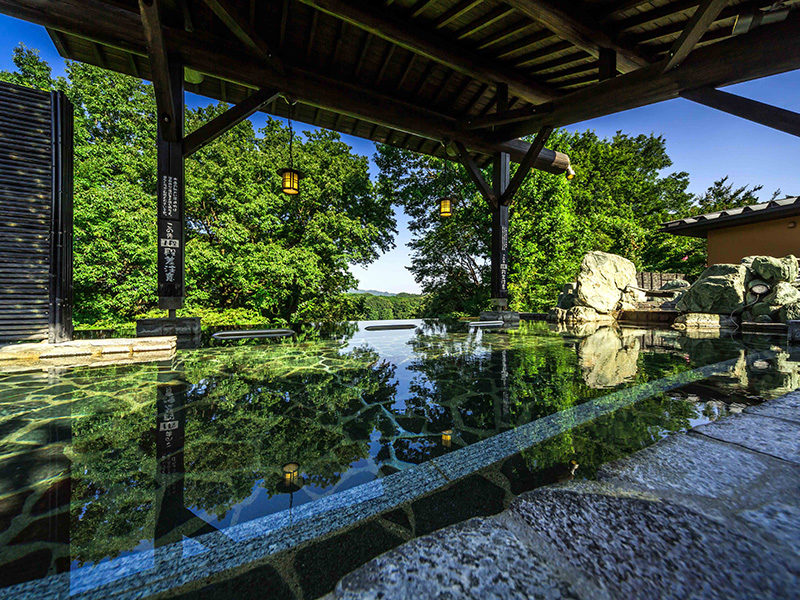
With low alkaline natural hot springs similar to a "Bijin no Yu" (beauty bath), the unisex large-scale outdoor bath, “Onnetsubō," overlooking Lake Miyazawa and the Chichibu Mountains is particularly popular! At the Four Seasons Buffet, “Kohansaryō," you can enjoy cuisine featuring locally harvest seasonal vegetables while taking in the view. ※ This is a facility for those older than elementary school. Preschoolers and younger are not allowed to enter.
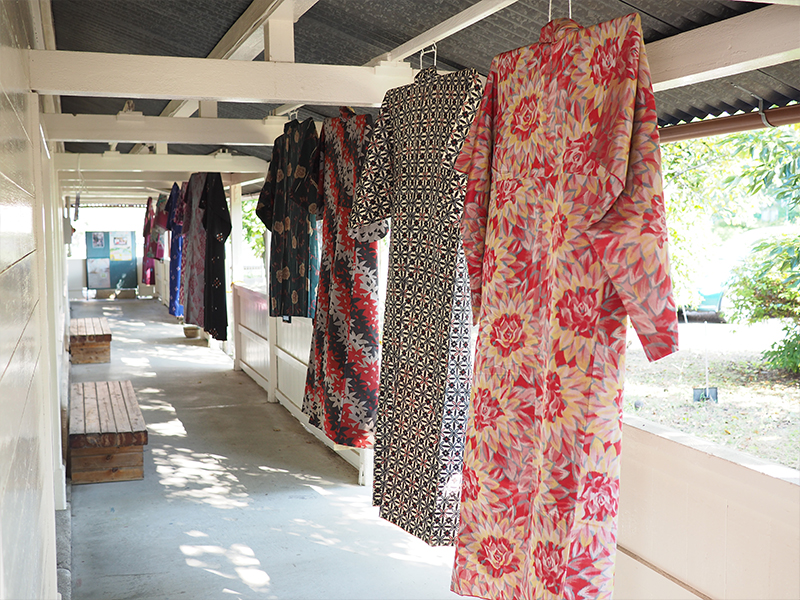
The building was built in 1930 and was registered as a Tangible Cultural Property in 2001. At the Chichibu-Meisen museum, you can learn about the history of Chichibu-Meisen, view the exhibits, and try your hand at stencil dyeing and weaving. All the equipment displayed in the museum is still in use, and if you are lucky, you can even see it in action.

The Kinchakuda Park was formed by the zigzagging flow of the Koma River that runs through Hidaka City, and is called Kinchakuda because its shape resembles a kinchaku (traditional drawstring money pouch). The park is a 500 meter diameter flatland surrounded by a river with a surface area of about 22 hectares. Flowers such as rape blossoms and cosmos bloom every season, but the highlight is the 5 million red spider lilies that dye the park crimson every autumn, like a giant, beautiful red carpet.
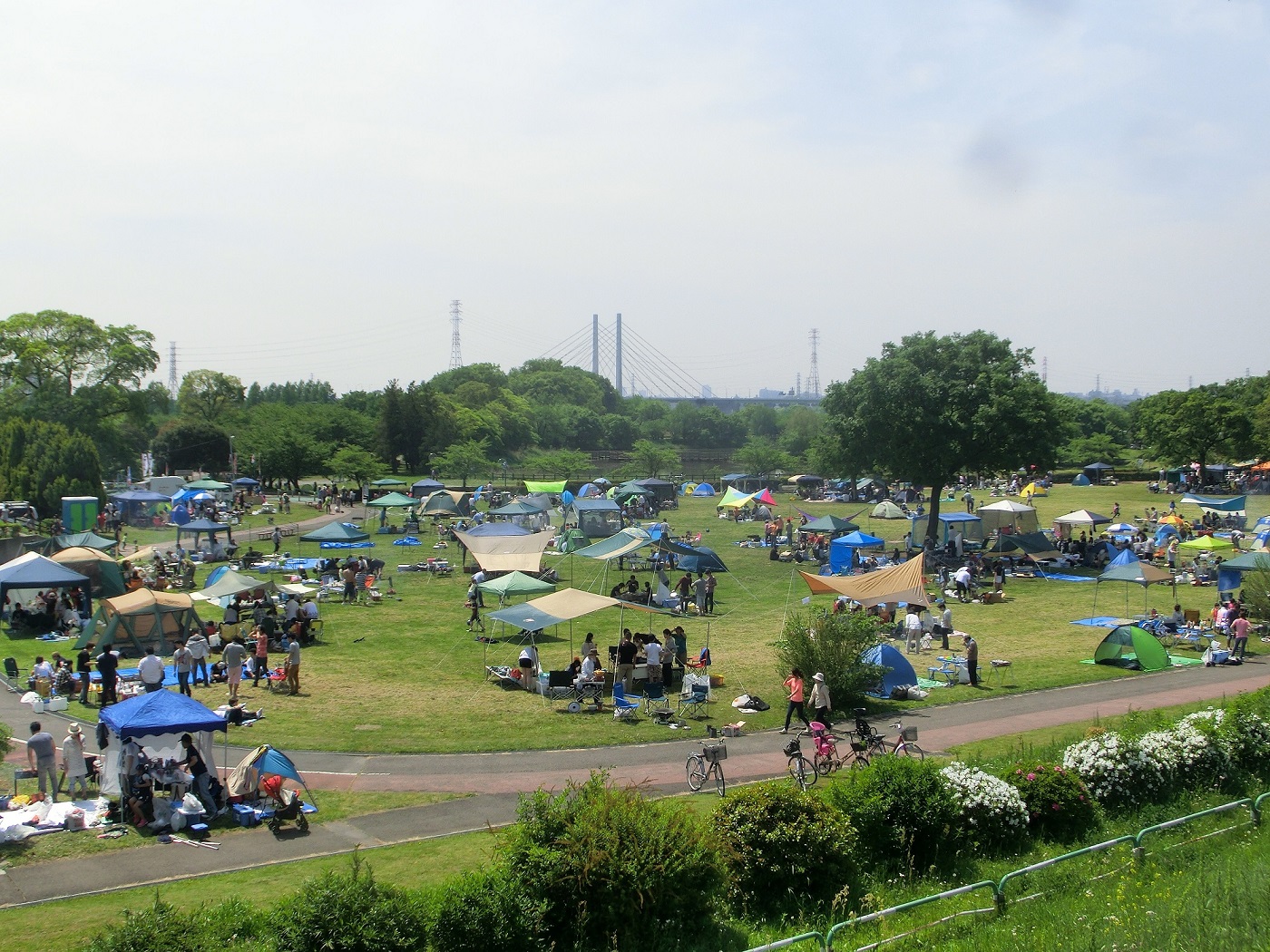
"Saiko" is a park developed along the Arakawa riverbed retention basin that's filled with nature; with the blooming of Japanese primrose and the beautifully maintained fields, visitors can relax and enjoy the change of the seasons. There is a spacious BBQ area where visitors can choose between a free area with no reservation required, and an area with BBQ prepared which requires a reservation. There are also tennis courts, dog friendly spaces, fishing spots and the lakeside area is a popular spot for cycling and windsurfing. With easy access by car, the park attracts more than one million visitors a year!
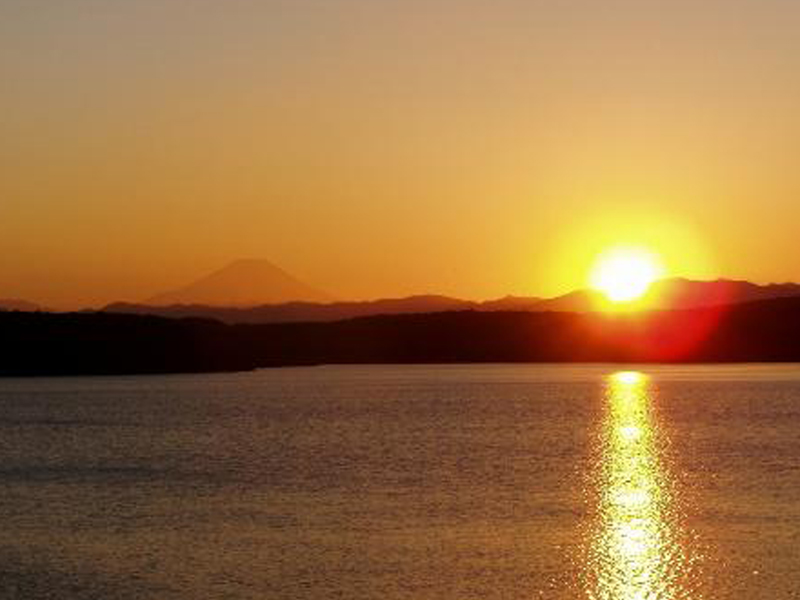
This man-made lake is located in the south-central part of Saitama Prefecture, straddling the boundary between Tokorozawa City and Iruma City. Completed in 1934 as a water reserve for Tokyo, the official name is "Yamaguchi Reservoir." The lake is surrounded by Saitama Prefectural Sayama Nature Park, where you can enjoy 20,000 cherry blossom trees in spring and vivid leaves in autumn, the symbolic Mt. Fuji reflected on the lake's surface and bird watching. The stunning seasonal scenery of this area was chosen as one of Saitama's 100 Top Nature Spots and 100 Top Dam Lakes.
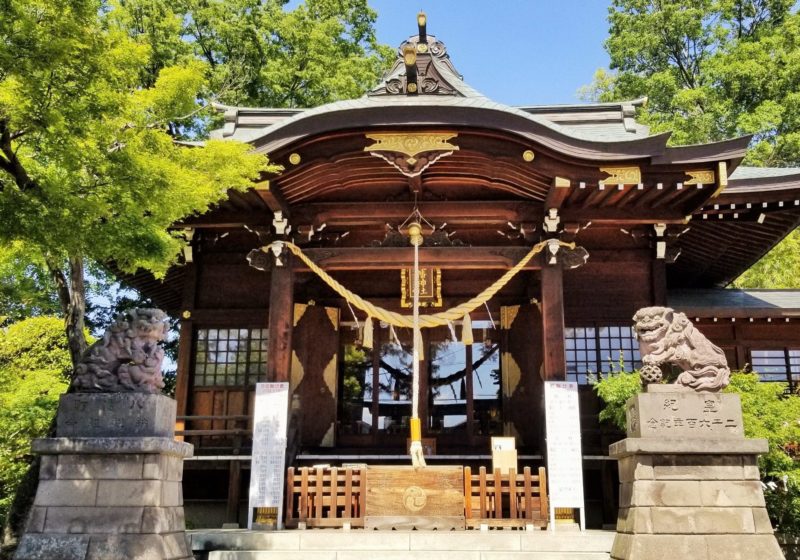
Gyōda Hachiman Shrine is called “Fūji no Miya" (Palace of Sealing) for its secret prayer method which is believed to help children sleep, prevents nervousness, cancer, diseases, bad habits and dementia in the elderly. In the precincts, there is a “shrine of the eyes,” the Kasamori Inari Shrine which enshrines the god of eczema and beautiful skin, along with “Okuninushi Shrine” that enshrines Oshi Castle’s 7 lucky gods. Recently, the “nade momo” (patting peach) is said to be a place for spiritual energy, and is famous for the god of warding off suffering from illness and misfortune.
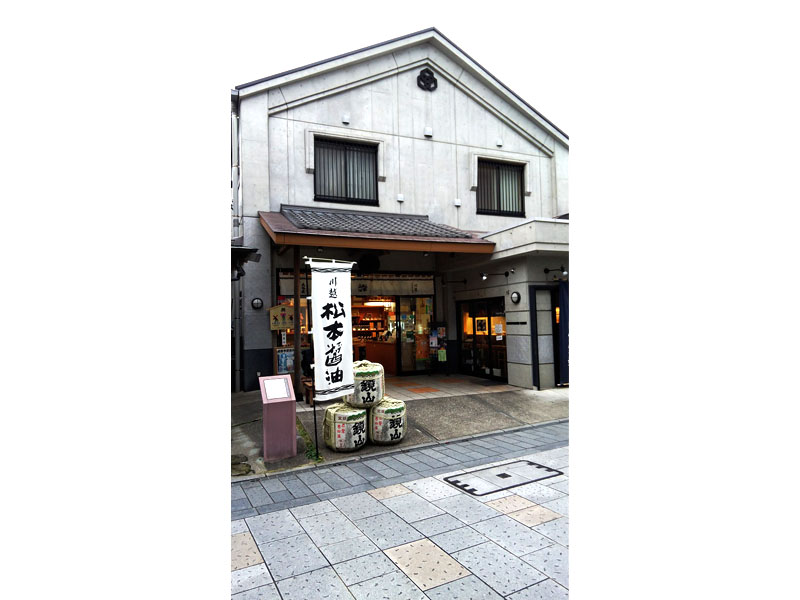
Matsumoto Soy Sauce Factory has been making soy sauce in Kawagoe for around 250 years. The brewery, established in 1764, still carries out production with traditional methods using 40 cedar vats that have been in use since the Edo period. At a tour of this soy sauce brewery, designated an important part of Kawagoe's city landscape, you can experience firsthand the tradition of soy sauce production.
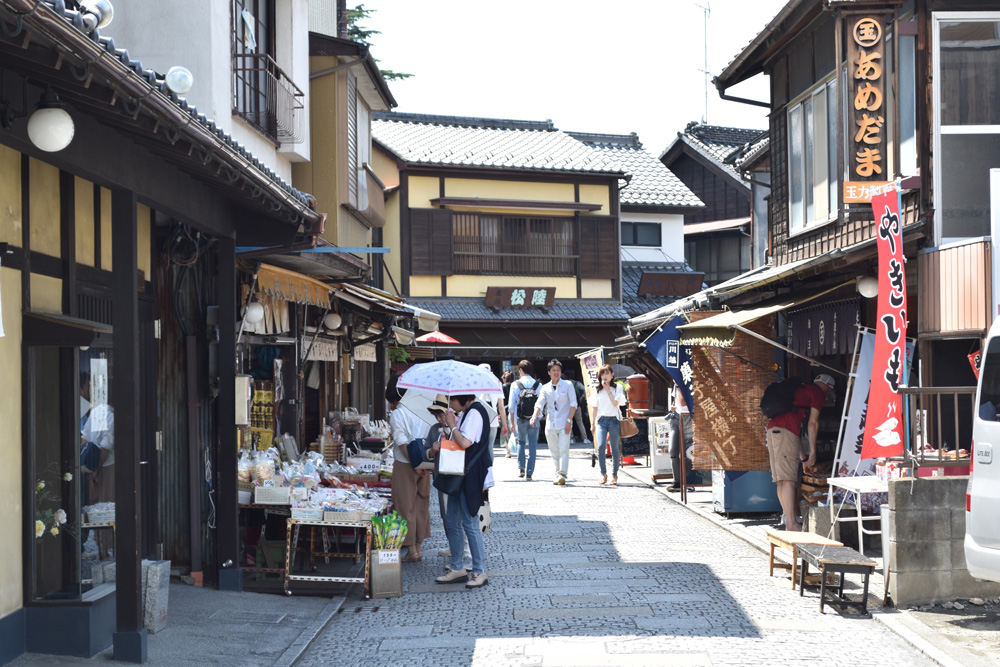
Many small, old-time candy stores line the Kashiya Yokochō (confectionery alley). 70 houses existed in the beginning of the Shōwa era, where they produced a variety of sweets to be sold wholesale. As of now, there are about 20 houses left that still produce and sell cheap sweets, such as mint candy and the Kintaro candy, which are nostalgic for both adults and children alike. Kashiya Yokocho was also selected as one of “The 100 Best Scented Sceneries” by the Ministry of the Environment.

This is the largest poppy flower field in Japan, spanning about 12.5 hectares. At the Poppy Festival in mid-May, you can enjoy refreshments, regional vegetables, and of course, flower picking! The view of Mt. Fuji from under the Onari bridge by the Arakawa river, where the field can be found, is known as one of the best views of Mt. Fuji. A truly spectacular and scenic view of red, pink, and orange poppies blooming all around you.

Located on about 13,000 square meters of the Nakagawa Riverbed, the contrast between the 120 pink peach blossoms and fields of yellow rapeseed flowers that bloom from March to April every year is a beautiful sight to see. In autumn, you can enjoy red spider lilies and cosmos. The annual Hanamomo Festival held in late March attracts many tourists.

Centered around a permanent exhibition about Asaka's local heritage under the 4 categories: archaeology, history, folklore and arts and crafts; there are also special and themed exhibitions, and a variety of lectures and workshops which are held in this “space for learning and relaxation.”

Menuma Shodenzan Kangiin Temple is known as one of Japan’s three holy temples and is said to bring blessings for matrimony, family health, fortune, and scholarly achievements. In 2012, the main sanctuary, “Kangiin Shotendo,” was designated as a national treasure due to its highly skilled carvings, modern decorative architecture and public funding of its construction. Events take place throughout the year, such as the annual grand festival and Setsubun festivals during the spring and autumn.
This site uses cookies to improve the user experience. If you continue to browse, you consent to the use of cookies on this site. Accept
CONTACT
